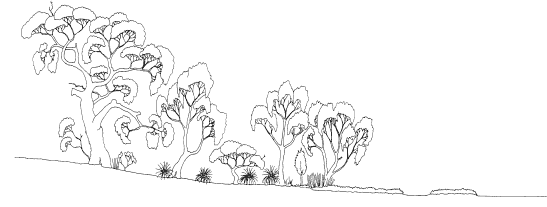|
|
Life in the Estuary
Knowing where to Grow
Vegetation forms distinct zones around the estuary. Features
such as tolerance to salt, waterlogging, wind and preferred
soil-type determine which species of plants will survive
in a particular location.

|
 |
 |
In the Bushes
Insects are everywhere! Termites build mounds and make channels
in old wood. Beetles, ants, earwigs and cockroaches live
under bark. Caterpillars and other larvae chew holes in
leaves. Aphids and other bugs feed on sap. Look for evidence
on the ground and in bushes and trees.
Many bush birds visit the trees. Listen for the calls of
Silvereyes, Inland Thornbills, Brown Honeyeaters, Mistletoe
birds, Grey Currawongs and Australian Ringneck (Twenty-eight)
Parrots.
|
 |
In the Water
The shallow, productive
waters of the estuary are teeming with fish and invertebrates.
This wealth of food attracts not only people but many species
of waterbirds. Spoonbills, egrets, ducks, stilts, terns, pelicans
and cormorants live on the estuary throughout the year, diving,
stalking, sifting or probing the mud for food. Sandpipers,
stints and other migratory waders are summer visitors.
|
 |
 |
In the Mud
The mud is alive with tiny invertebrate animals, fungi, bacteria
and algae. These organisms are small but vital links in the
estuary ecosystem. |
|
|



